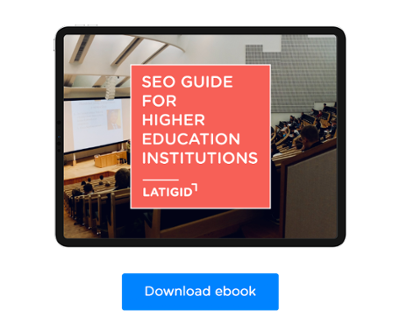
From conventional education and in-person marketing activities to digital marketing and virtual fairs and events, marketing for higher education in the current days is a big challenge.
Every year there are new social media platforms, new trends, and the student's attention changes from one place to the other. In this article, we will cover the upcoming trends to look out for, as the pressure to stand out from other universities increases.
Use Short Videos
Universities should create short-form videos (between 30 and 90 seconds) and incorporate them into their marketing strategy given that Gen-Z has the world at their fingertips. It’s an easy way to get prospective students involved, and can easily be shared on a lot of social media platforms, as most of them accept video content, such as TikTok, Instagram Reels, Youtube Shorts, Facebook, among others.
The potential to reach a massive number of potential students online is huge, and having these videos on social media will allow people interested in your university to share those videos with their friends with just 2 clicks.
Here are some concepts for videos you could do to promote your institution online:
- Tours around the university. For example: campus, buildings, classrooms, cafeteria, dorm rooms, gym, etc;
- Day in a life of student ambassadors (Could be done for every course);
- Informative videos highlighting specific majors and courses;
- University announcements and events;
- Graduation videos;
- University challenges;
- Answer FAQ’s about the university;
- Notable alumni stories.
The majority of students who apply to higher education have social media accounts, so what better method to promote your university than by engaging and creating awareness with prospective students on a global scale?
Show that your institution can help students achieve their dream careers
There is no doubt that the number 1 reason students go to university is to get a career. Without demonstrating the career value of a specific degree in your institution, marketing to students will be very difficult. It is crucial that students can clearly see how your institution can help them achieve their professional goals.
Higher education institutions can illustrate the potential advantages of taking a degree in their institution by describing the employment results of previous graduates. Providing data-driven messaging that explains graduation rates and expected wages is important in this regard. It goes without saying that this kind of information might differ significantly between institutions and programs at the same university, however, prospective students are often more inclined to enroll if they are aware of the potential worth of a degree in their professional path.
Invest in SEO
Higher education institutions can increase visibility and rankings inside the main search engines by prioritizing search engine optimization (SEO). Established SEO tactics can help with higher education promotion and marketing efforts because so many students perform their research on universities on popular search engines like Google.
Apart from that, an SEO strategy produces considerably more informative data than conventional higher education advertising and marketing techniques, which can guide you to decide where to focus your marketing efforts and investments. By drawing visitors to your website, a virtual data-mine opens up, revealing a wealth of insightful information that you can later analyze and use to your advantage.
In addition, SEO can give your institution’s website consistent results over time, and increase the authority and value of your website, unlike other strategies like Pay-Per-Click (PPC) for example, which stops giving you results the moment you stop paying for clicks.
Understand your audience
According to a McKinsey study, marketers who best understood their target market performed best across the board in terms of acquisition, conversion, satisfaction, and other metrics that positively influence enrollment rates.
Thanks to CRM systems, universities can now collect, maintain, and analyze data about prospective, current, and past students as well as analyzing metrics from their marketing efforts, such as paid campaigns, SEO, CTA’s, among others.
Centralizing this data allows institutions to have a 360-degree view of their students and marketing efforts, which can be used to make crucial touchpoints during the student journey, from the first application all the way to graduation. All this data can positively influence students' experience at your institution as well as give guidance to the institution’s decision-making on future campaigns and investments.
Effective communication channels
Prospective students who seek contact with a university do not want (and probably won't) to wait days for a response. An active presence on social media and the use of tools such as chatbots on the website contribute to different and effective forms of communication between your institutions and students.
Investing in communication that is close and attentive, and promoting a pleasant and memorable user experience is a premise of relationship marketing. Remember that, more than the solution to doubts and problems the students might have concerning studying at your university, the demand is for a service that does not carry the same reputation of slowness, inefficiency, and impersonality of a lot of other services and institutions, giving the usual non-personalized messages to everyone.
Bonus Tip:
No matter what you do, please remember that the majority of people you’re trying to reach belong to Gen-Z. This absolutely means mobile-first.
According to the Institute of Business Management, 74% of Gen Z-ers spend their free time online. Another study by ThriveMyWay found that on average they spend around 8 hours per day online, meaning that if they will find your institution’s website or content on social media, they will most likely be using their phone.
For all the marketing efforts you make, either the content on the website, the videos, or program brochures, make sure they are optimized for mobile.
If you need help creating a digital marketing strategy for your higher education institution don’t hesitate, talk to us.




